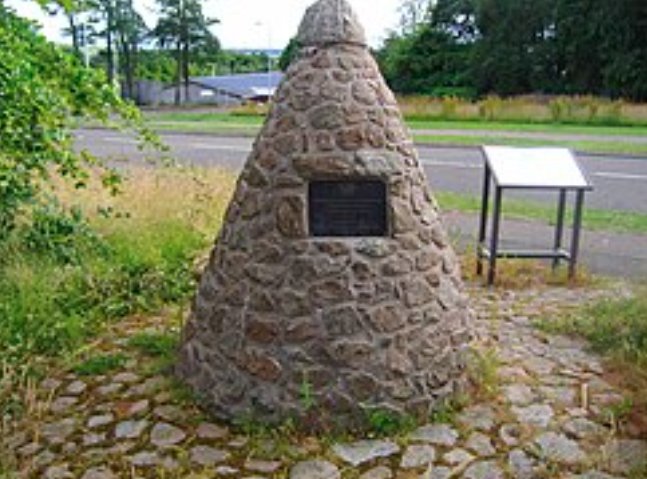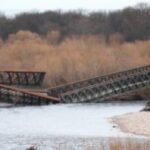In the quiet fields of Inverkeithing in Fife, Scotland, locals fiercely protect a historic battlefield from the tourism boom sweeping other heritage spots. This site marks the spot of the 1651 Battle of Inverkeithing, where 2,000 Scottish soldiers lost their lives in a brutal clash with English forces, yet it remains free from crowds and fees that plague places like Stirling Castle.
The battle on July 20, 1651, sealed Scotland’s fate under Oliver Cromwell’s rule, but today, community efforts keep the area unmarked and integrated into everyday farm life. As visitor numbers soar at nearby attractions, Fife residents choose silence over souvenir shops to honor the past in peace.
The Fierce Fight That Ended Scottish Resistance
The Battle of Inverkeithing stands as one of Scotland’s bloodiest encounters during the Wars of the Three Kingdoms. English Parliamentarian troops under General John Lambert outnumbered the Scottish Royalists led by Sir James Holborne by more than three to one, leading to a devastating defeat for the Scots.
Around 4,000 Scottish fighters, including fierce Highland clansmen, clashed with 14,000 English soldiers across the rolling fields near Pitreavie Castle. The engagement lasted just hours, but its impact echoed through history, paving the way for Cromwell’s full conquest of Scotland within months.

Key moments from the battle highlight the bravery and tragedy involved. Here are some notable facts:
- Five hundred MacLean clansmen died defending their chief, Sir Hector Roy MacLean, each reportedly crying out “Fear eile airson Eachuinn!” meaning “Another for Hector!” as they fell.
- English losses were light, with only about eight killed and a few dozen wounded, showcasing the one-sided nature of the fight.
- The victory allowed Cromwell’s forces to cross the Firth of Forth unchecked, opening the rest of Scotland to occupation.
- This was the last major battle in Scotland during the civil wars, marking the end of organized resistance against the English Commonwealth.
Historians note that the site’s strategic location near the Forth made it crucial, as controlling it meant dominating sea routes and supply lines. Recent archaeological interest, including a 2011 dig that uncovered artifacts, reminds us how much remains buried in these fields.
Why Locals Choose Obscurity Over Tourist Trails
Inverkeithing’s community has long opted to shield the battlefield from commercialization, viewing it as a deliberate act of preservation. Unlike other sites that build visitor centers and charge entry, this area stays on private farmland, with no signs or paths guiding crowds to the exact spots of the clash.
Residents argue that keeping it low-key prevents the erosion of history by foot traffic and development. They point to the site’s integration with working landscapes as a way to let the past coexist with the present, much like how ancient ruins blend into rural life elsewhere in Scotland.
This approach gained fresh attention in early 2025 when Fife launched a major heritage marketing push, yet locals in Inverkeithing pushed back against including their battlefield in promotional packages. Community groups emphasize that true respect comes from quiet reflection, not guided tours.
One local historian shared that the area’s royal burgh status since 1161 adds layers of history beyond the battle, including medieval trade routes that deserve protection from mass tourism. By avoiding hype, they ensure the site remains a living part of Fife’s identity.
Commercial Chaos at Scotland’s Popular Heritage Spots
Stirling Castle draws massive crowds with its £16 adult tickets, processing nearly 595,000 visitors in 2024 alone, a sharp rise from previous years. Timed entries and merchandise sales turn the experience into a rushed affair, where history feels secondary to the business side.
Culloden Battlefield, site of the 1746 Jacobite defeat, saw even bigger growth, with 374,000 visitors in 2024, up over 40 percent. Its modern visitor center offers immersive exhibits, but critics say the £14 fee and roped-off paths create barriers between people and the land where events unfolded.
These trends highlight a broader shift in Scotland’s heritage management, where sites invest millions in infrastructure to boost economies. Bannockburn Heritage Centre, for instance, received £9 million for upgrades, drawing steady crowds but sparking debates on authenticity.
In contrast, Inverkeithing offers unfiltered access, letting visitors wander freely without queues or upsells. This model appeals to those tired of the “Disneyfication” of history, as one expert called it in a recent discussion on Scottish tourism.
To illustrate the differences, consider this comparison of key sites:
| Site | Annual Visitors (2024) | Adult Entry Fee | Key Features |
|---|---|---|---|
| Stirling Castle | 594,938 | £16 | Timed slots, audio guides |
| Culloden Battlefield | 374,443 | £14 | Immersive theater, paths |
| Inverkeithing Battlefield | Minimal (no tracking) | Free | Unmarked fields, private land |
Such data shows how commercialization drives numbers but may dilute the raw emotional impact of these places.
Medieval Gems Hidden in Inverkeithing’s Streets
Beyond the battlefield, Inverkeithing boasts medieval structures that rival any tourist draw, yet they stay under the radar. The town held Royal burgh status by 1161 and hosted the Convention of Royal Burghs from 1487 to 1552, making it a hub for ancient Scottish governance.
Stone gates known as “ports” from 1557 still stand, framing streets where merchants once bustled centuries before the 1651 battle. Historic Environment Scotland protects 41 buildings here, including the country’s finest preserved medieval friary, offering glimpses into pre-battle life.
Walking these lanes reveals secrets like the friary’s arched cloisters, untouched by modern developments. Unlike Stirling’s crowded exhibits, you explore at your own pace, perhaps stumbling upon a quiet plaque marking old trade paths.
This blend of battle history and medieval architecture creates a richer narrative, one that locals nurture without fanfare. Recent Fife heritage initiatives in 2025 spotlighted such sites online, but community input ensured Inverkeithing’s treasures remain accessible yet not overwhelmed.
Balancing Preservation and Modern Scotland’s Needs
Fife’s approach to sites like Inverkeithing reflects a growing movement in Scotland to rethink tourism’s role in heritage. While economic strategies aim to grow visitor spending to £712 million regionally in 2024, not every spot needs to chase those figures.
Experts praise this selective model, noting it prevents overuse that has damaged other battlefields through erosion and litter. Inverkeithing’s fields continue as working agriculture, supporting local farmers while subtly educating passersby through subtle memorials like the cairn on Castle Brae.
Tying into current trends, this preservation aligns with 2025’s push for sustainable tourism amid climate concerns. As Scotland faces rising sea levels affecting coastal sites, keeping some areas low-impact sets an example for future care.
The strategy also solves practical problems for visitors seeking authentic experiences. No parking hassles near tour buses mean you park on Hope Street and walk freely, connecting directly with the landscape that witnessed such pivotal events.
In a time when heritage sites grapple with post-pandemic recovery, Inverkeithing shows that less can be more. It invites thoughtful exploration, fostering a deeper appreciation for Scotland’s complex past without the distractions of commerce.
If this story of hidden history intrigues you, share your thoughts in the comments below and spread the word to fellow history lovers. What other underrated Scottish sites deserve a visit?


















